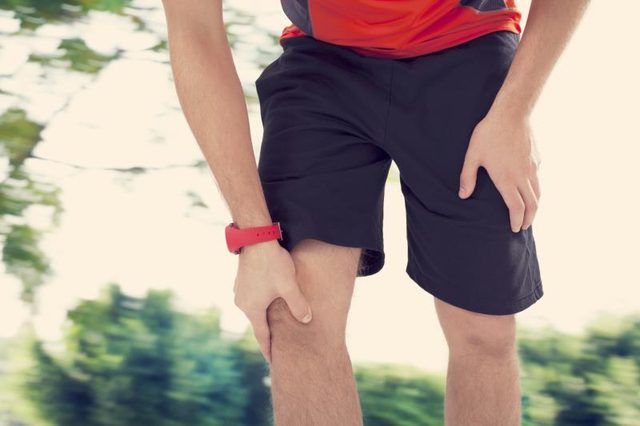What Causes Kneecap Pain When Walking?

Kneecap pain, also known as patellofemoral pain, strikes people of all ages. Some people notice pain in both knees, while in others it is relegated to only one leg. While the exact cause is often unknown, that doesn't mean you need to suffer with a sore joint. There are plenty of things you can try that might ease the pain in both the short and long term.
Potential Causes
The cause of kneecap pain often goes unidentified. In some cases, injury or overuse can weaken the cartilage under the kneecap, causing a dull pain that gets worse when walking downhill, descending or ascending stairs, or when straightening the leg and walking after sitting for a while. A strike to the kneecap, such as during sports, can also knock the cartilage out of alignment and cause this kind of pain. Some forms of arthritis also weaken the cartilage under the kneecap, leading to pain that can intensify during even simple activities such as walking.
Immediate Solutions
If you have knee pain, you should avoid high-impact activities until the pain subsides and the knee heals. After walking, you can put ice on the knee for 20 minutes to reduce inflammation and pain. You can also take over-the-counter pain medication, such as aspirin, ibuprofen or acetaminophen, to ease the soreness and stiffness. Corticosteroid injections can also temporarily stop kneecap pain in some patients.
Long-Term Solutions
If arthritis is determined to be the cause of your kneecap pain, you might be able to get injections of medicines that lower the immune response, ease inflammation and halt joint damage. Depending on the cause of the kneecap pain, your doctor might recommend surgery to fix the underlying problem. Some types of surgery you might need include a transplant of cartilage from another area of the body to under the kneecap or an operation to realign your kneecap to reduce friction underneath it. In cases of severe damage, your doctor might recommend a total knee replacement.
Prevention
To prevent future instances of kneecap pain, you should work to take care of your knees and build up your legs to provide effective support for them. Low-impact exercise, such as swimming or riding a stationary bike, builds up the muscles around the knee without stressing the joint. You might also want to institute a workout program involving stretches, since stretching reduces the pressure on the knee. Ask your doctor about the best forms of exercise for you before starting an exercise program on your own.
Note – This information has been taken from different internet sources.
- Choosing a selection results in a full page refresh.
